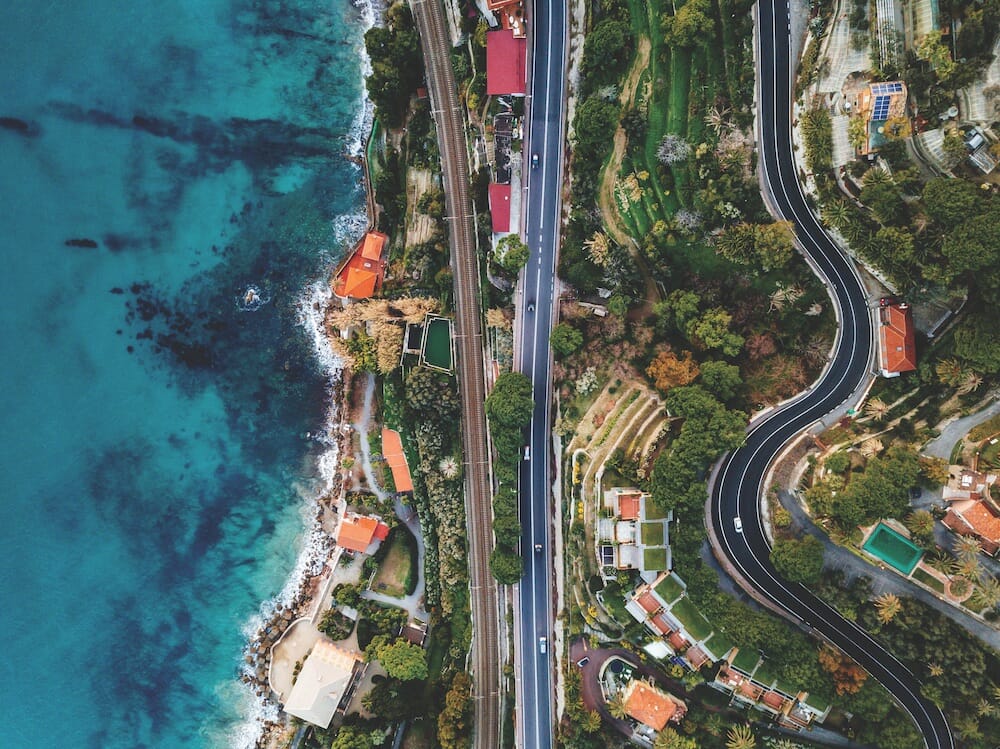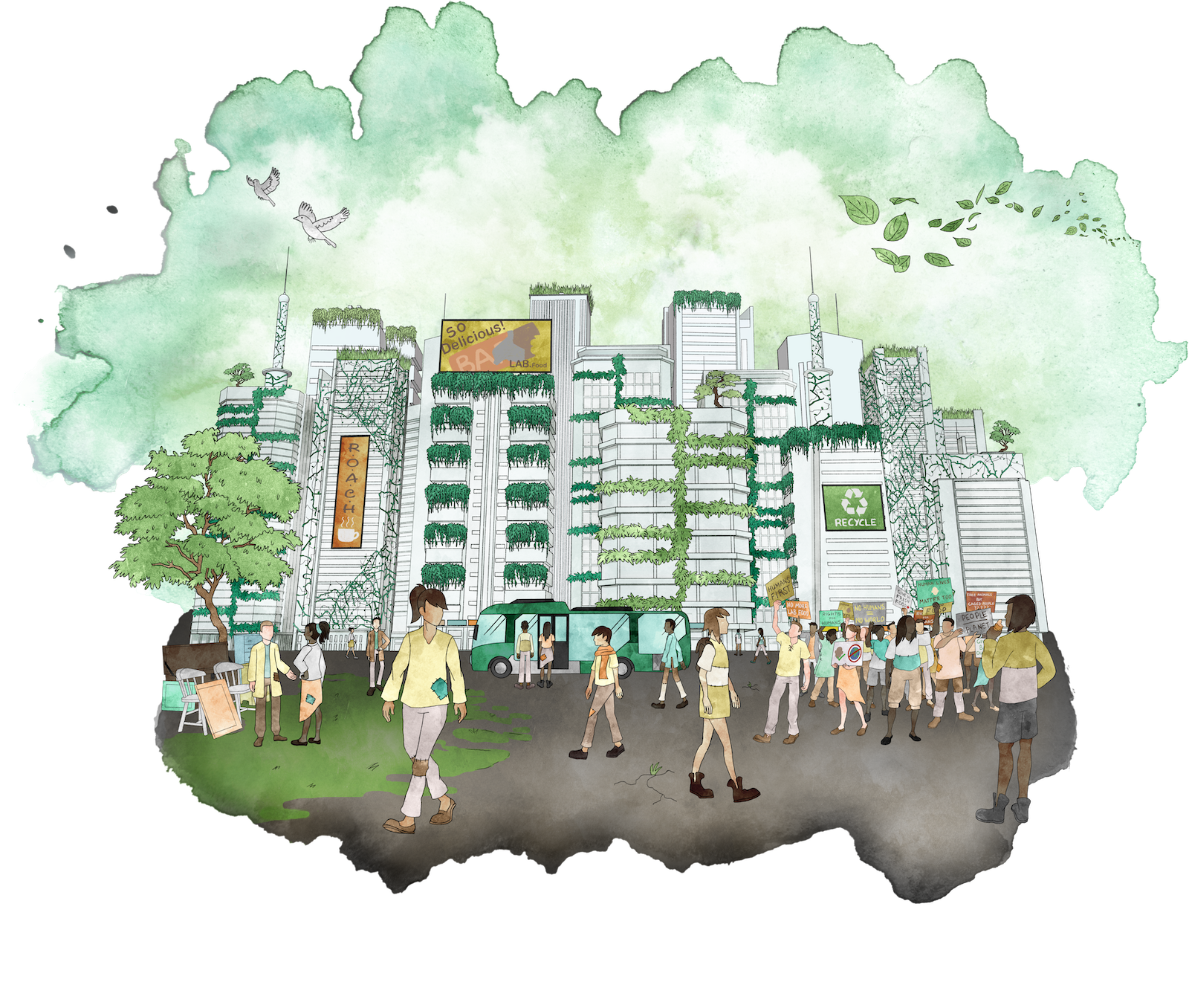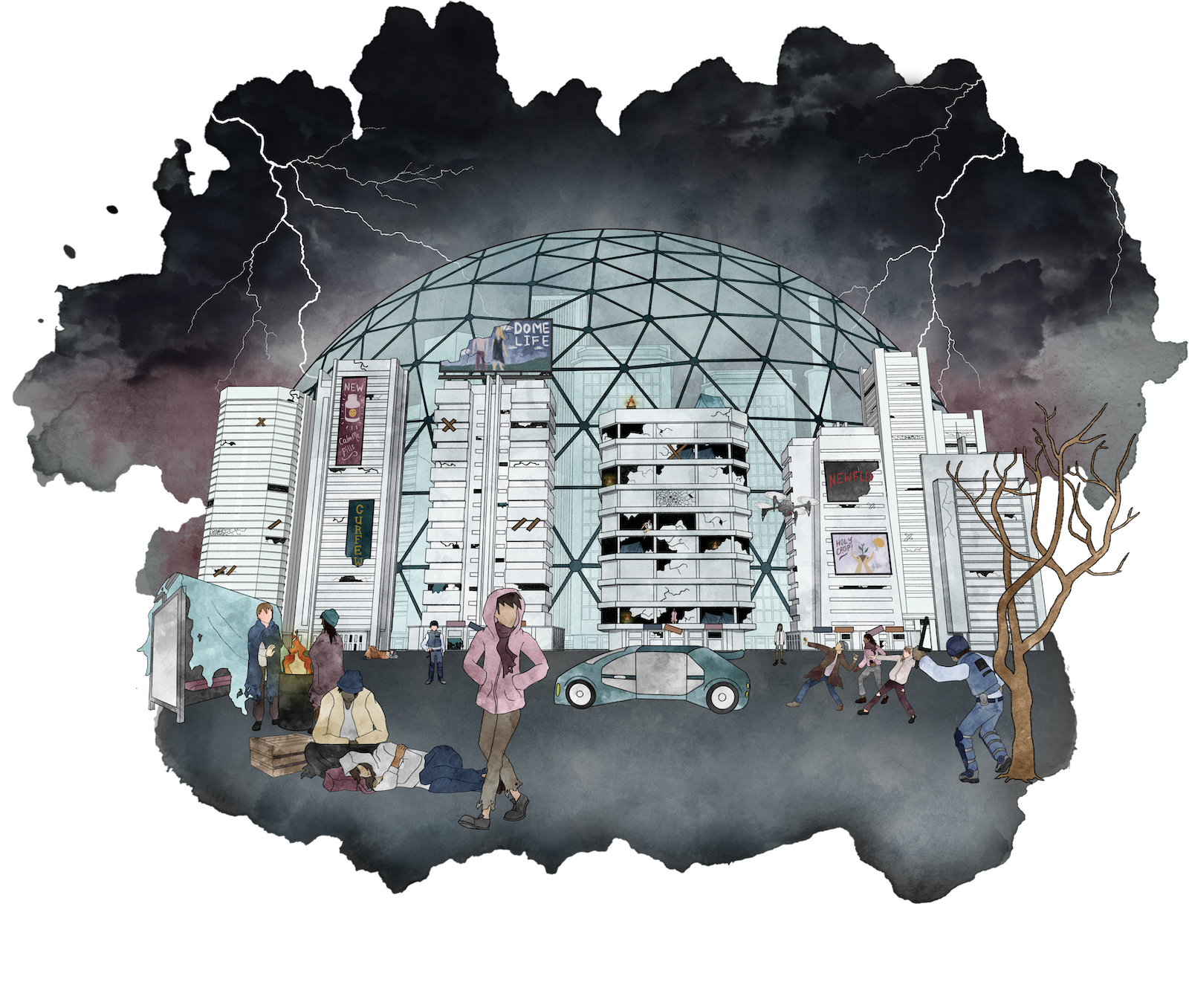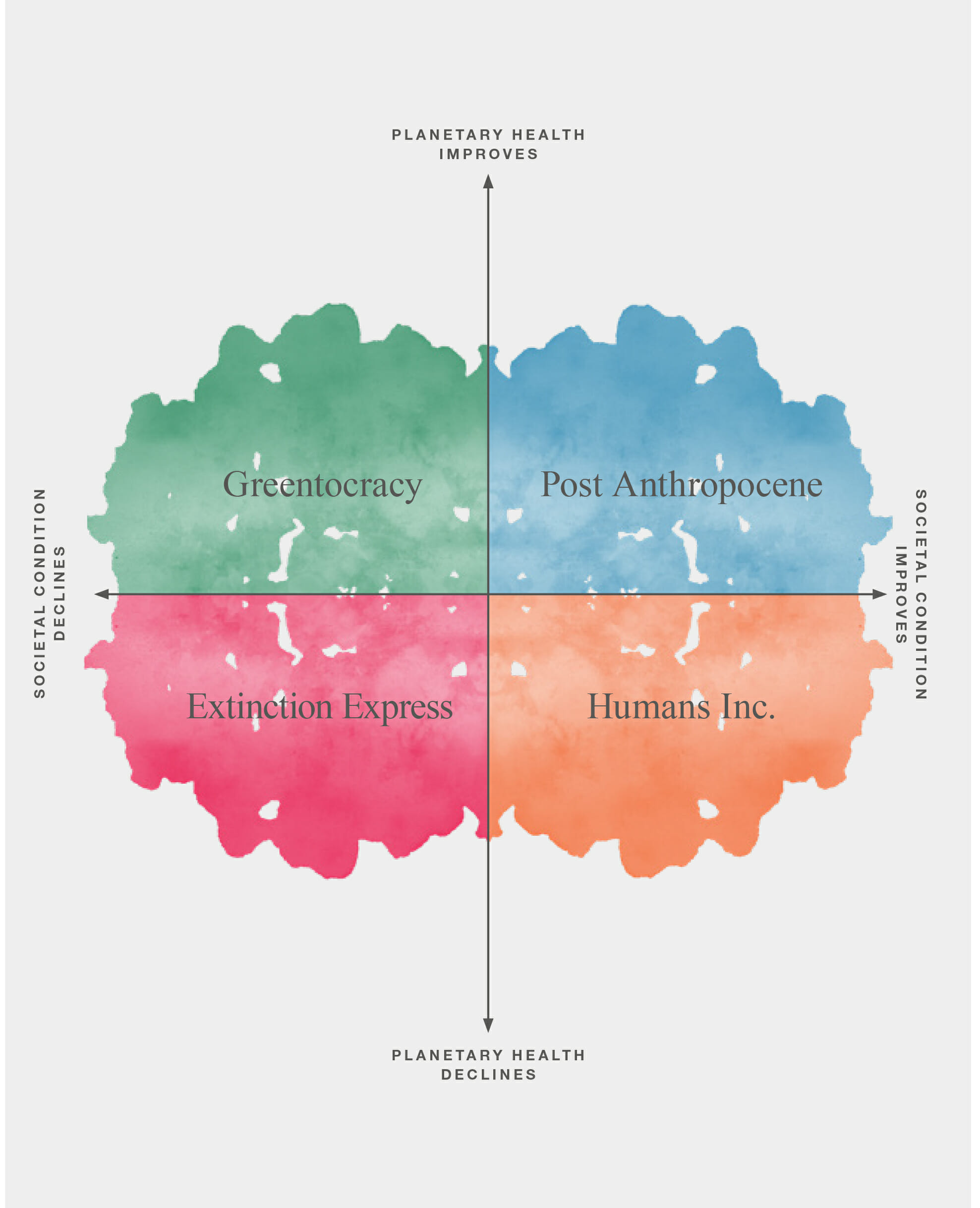Our Future World
2050: It’s up to us.
At Arup, I work as a foresight practitioner, where my job is to consider the future of the built environment and how today’s designs can make an impact; as well as thinking about the future impact we want to make to consider how we can design things today to achieve a future that is fit for us all.

Photo courtesy of Arup
By Jonelle Simunich, Senior Foresight Strategist, Arup
In writing Arup’s 2050 Scenarios: Four Plausible Futures, a report recently published envisioning city life in 2050, we struggled when we got to when we got to one particular scenario, the Post-Anthropocene. While the other three scenarios (Human Inc., Extinction Express, and Greentocracy) consider both positive and negative aspects for society and natural systems. The challenge for Post-Anthropocene—where both society and planetary conditions improve—lied in that we all thought we knew what the positive future would looked like; harmonious, green, peaceful, plentiful, and so on. This is meant to be the future we all want to see, to live in, to inhabit, yet it was the most difficult to envision. How can we design a city, build-ing, system, experience, glassware, document, anything, when we are tied to making planetary improvements; mapping, analyzing, and adapting systems; and doing things in a way no one has ever done before, or that no one really knows how to do?
And, to be honest, trying to paint a picture of peace and harmony does not produce the most attention-grabbing results. Humans thrive on tensions, on struggles, on the leaders for negotiations and conflict. Designing “utopia” and a world that considers “Spaceship Earth” is much more challenging than one might initially envisage. Consider what world you might want to live in, what impact you might want to make on the world, and how that impact could play out in the future. Many of us are able to start by listing out pieces, aspects, and elements we like, want or wish to see. But designing that in 3-D is more of a struggle. As such, my design challenge to you is to design the 2050 YOU want to see. Take into consideration the impacts you want manifest-ed into reality. If you had unconstrained condi-tions, what would you envisage? My challenge to you is not to design any future, design one you really and truly think will be better; while considering the impact it will make on future people, planet(s), cities, systems, processes, wellness, on anything and everything. We all want a better life, for us, for our fami-lies, for our friends, for our people. But have any of us ever really considered the detailed design? Here are some questions to get you thinking. Will it mean more money or less? Will it mean constraints, and how so? What will success look like? Will it mean happiness? What will we have to sacrifice, if anything? What does resource consumption look like? What might the various economic models look like? Are they the same everywhere or will it vary by location? These are the kinds of questions I ask myself and our cli-ents daily. The future is unknown, yet one thing we know is we all want to design, build, construct, and inhabit a future that is better than today. Which bodes the question, “What does better look like?” Our existing social constructs tell us that “better” means more money, more stuff, more consumption, more, more, more. Well, what would a future look like if we didn’t have more, but had less or some other model? Is there even an option of having a better future that doesn’t consist of “more, more, more?” Is there a way to have more that doesn’t endlessly extract resources? The planet, and her resources, have underpinned our modern economies, and been the only model many of us in North America and Europe have known.

Post-Anthropocene: A path to a regenerative world where society consumes resources at a rate in which they can be replenished. Humanity recognizes and values ecosystem services, in turn helping to improve the quality of life for both the planet and society.

Humans Inc.: This period reflects a business-as-usual trajectory from 2020. The condition of humanity has continued to improve, but it comes at the expense of the environment. Climate considerations have become subordinate to economic development and societal well-being.

Greentocracy: The Earth and its health has the highest priority on every national and transnational agenda. Global efforts for climate action have been made at a significant cost as humanity lives in self-imposed servitude to the environment.

Extinction Express: Natural resources that had been previously taken for granted and consumed led to the destabilization of natural systems. Resource and energy shortages are pervasive around the world. Society is driven by fear of the ‘foreign’ and ‘different’ as isolationism has been on the rise for years.
Impacts
The future is fiction. It is a story we tell our-selves. A story we create. A story we have the ability to take actions toward, or not. Each and every one of our daily interactions is a step to-ward the future; be it knowing or unknowingly. Did you decide to drink water today, or a soda? Did you walk to work or Uber? Did you say hello to your co-worker or rush to your desk? It’s the daily decisions we take that make the biggest impact on our collective lives. With the changing world we’re living in, questions around what the future could, should, and must hold is increasingly prevalent. Will it look like X, or Y, or Z, or Q? There is no way to really know, but we can get a bit closer by looking at trends, data, and by delivering scenarios to help us start to approach this question. In my role as a foresight practitioner, I help people think about the world we want to live in, and the ones we don’t. Scenarios are one way to help us. By juxtaposing positive with negative, or the desirable with the undesirable, we can start to paint the future we want, the future we don’t want, and the future we think is most likely. Following scenario development, we can then start to think more practically about how we want to construct that vision.

Arup’s recent publication looks at the world in 2050 and considers all these things. In this document we designed four different plausible futures based on planetary health and societal well-being improving or declining as drivers for our communal future. What would the world look like if planetary and societal conditions both improve? Could people and the planet live in harmony? The Post-Anthropocene depicts such a future where people only use the resources they need and consider their everyday impacts on each other, as well as on the environment. What would happen if both planetary and societal conditions degrade? Extinction Express outlines the grim conditions for the majority, where decades of desires have stripped the planet of resources, where chaos rules, and every-person-for-themselves is the modern mantra.
What if we put our planet before the needs of the people? Restricting resource use, restricting access to nature, restricting people’s lifestyles in an effort to get to one-planet-liv-ing. Greentocracy illustrates what the future might look like if humanity is able to transition from using 1.7 planets per year to using less than one. What if we carry on as we are? Using up re-sources as we see fit, building cities as we see fit, but all in honor of improving the lives of humanity globally? Humans Inc. describes a world where resources are used frivolously in honor and effort to better the quality of the human condition; but at the expense of our one-and-only habitat.
None of us know what the future really holds. But we can imagine. We can begin to design, plan, and build toward it. We can put the plan-et or people at higher priority, but with either option we will have unique consequences and benefits. Or shall we consider the reality of what a planet in harmony might look like? I hope my questions have left you curious, puzzled, inspired, and determined to think about how you might design better for both the planet and people.
